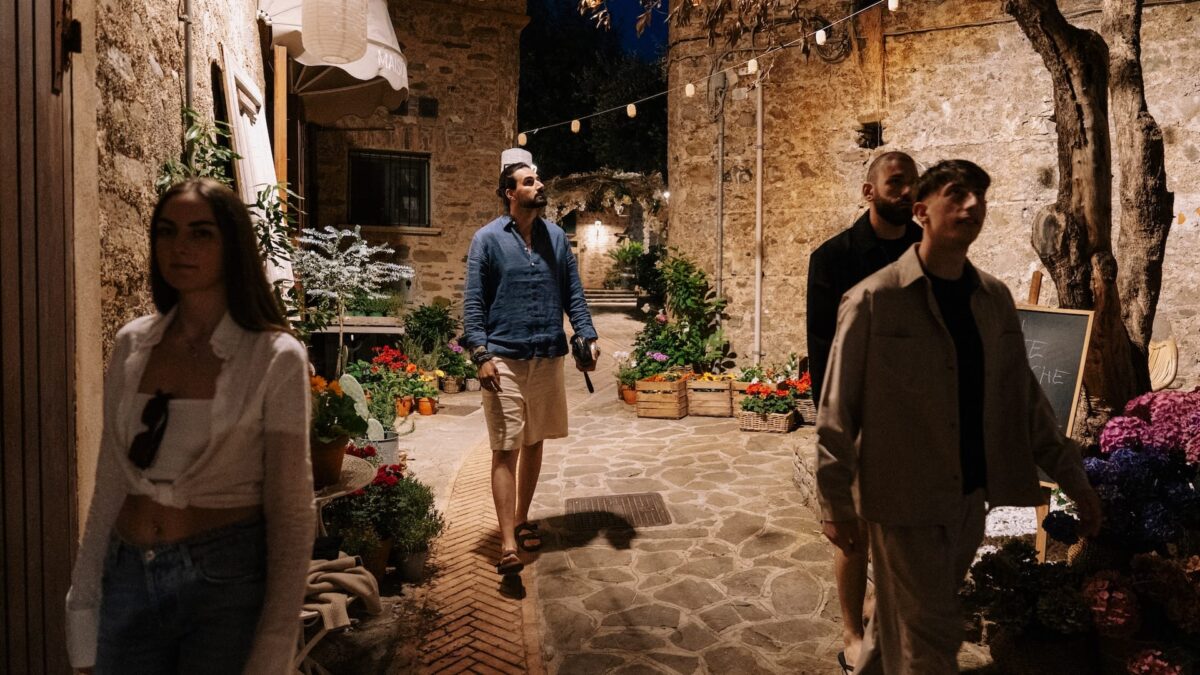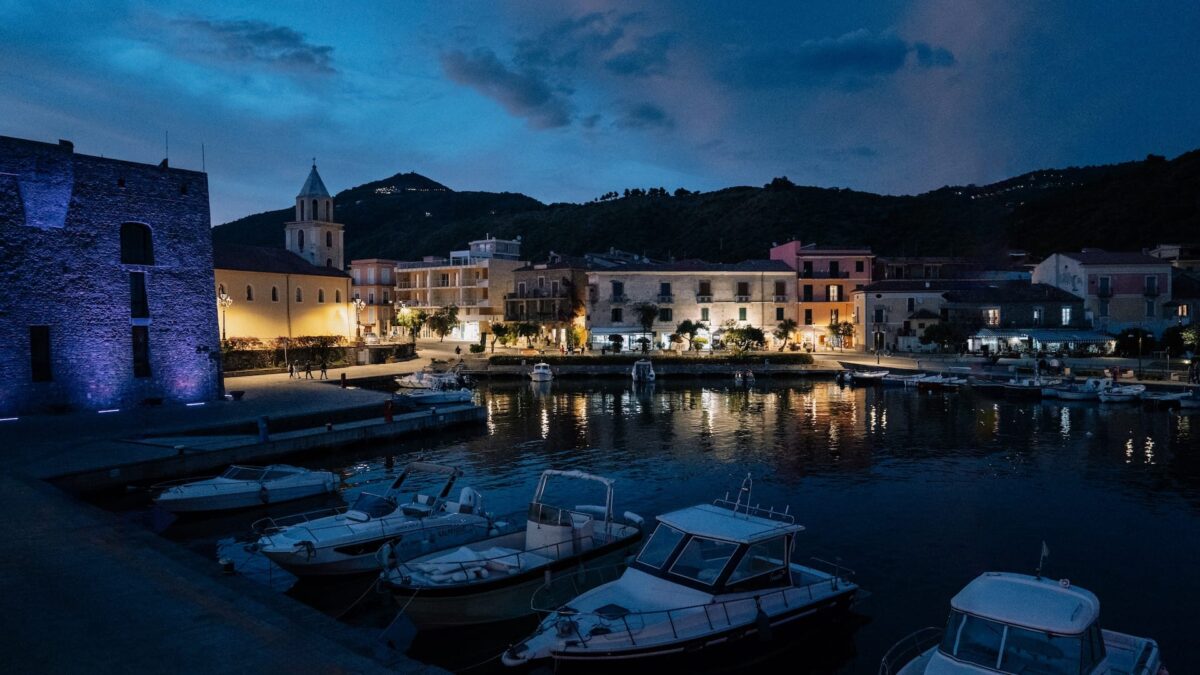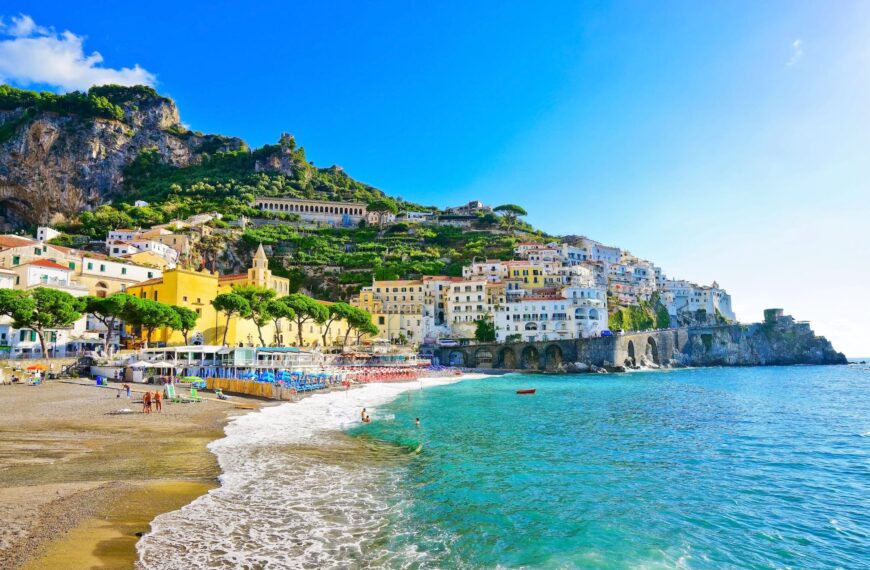Embraced by green hills and overlooking the deep blue sea, this ancient fishing village offers a plunge into a truly unique atmosphere
Some stumble upon it by chance while traveling along the Salerno coast—and never want to leave. Others now consider it their second home. Still others may never have visited, like Ernest Hemingway, yet legend has made them honorary residents. We’re talking about Acciaroli, a small village rightly considered the pearl of Cilento and a favorite destination for those who value not just the sea but also its tranquility.
Indeed, in this hamlet of Pollica, home to just 600 residents, life truly moves at a slower pace than what most of us are used to.
In Acciaroli, you don’t come to lose yourself but to find yourself again—enjoying days of pure peace and relaxation, in harmony with both nature and people. Here, the two seem more in tune than elsewhere. Those who live here year-round know they’re lucky, enjoying the calm of a place seemingly frozen in a distant time. Those who return for another vacation know they won’t be disappointed. And first-time visitors… well, prepare to be surprised.

A Charming Historic Center
You’ll find the enchantment of a medieval village, where stone houses line narrow alleys dotted with shops, plants, and restaurants. Hotels and B&Bs are available but blend seamlessly into a setting far removed from mass, fast-paced tourism. This step back in time is enough to win over even the most romantic hearts, but the presence of the sea remains essential—alongside the green hills surrounding the village.
Not too steep along the coast and rising gently inland, these hills are part of the Cilento, Vallo di Diano, and Alburni National Park—a must for trekking and nature lovers.
Beaches for Every Taste
Still, more than for its beautiful woods, people come to Acciaroli for its stunning waters—and the cleanliness of its beaches. This is a place repeatedly awarded for the quality of its shores, receiving both Legambiente’s 5 Sails and the Blue Flag from the Touring Club. Whether you’re visiting solo, as a couple, or with family, it’s hard not to find your dream beach.
Easily accessible from the historic center, the town’s beaches stretch to both sides of the small harbor, offering both sandy and pebbled options.
More suitable for families with children, the beaches to the left of the harbor are sandy and well-equipped. One such beach is the Spiaggia Grande—as the name suggests, the main beach of Acciaroli. It boasts a wide stretch of fine sand washed by clear, shallow waters. With both equipped areas and free zones, it’s just a short walk from the town center and is often the first beach visitors encounter.
Torre Caléo and Pioppi
To the right of the harbor, the beaches are covered in small pebbles and gravel. Among these, one particularly loved spot is Torre Caléo, near the ruins of a Norman structure. At the edge of Pioppi—the other hamlet in the municipality of Pollica, which includes Acciaroli—this beach lacks the comfort of sand but offers the raw beauty of rocks and stones.
Its waters, however, are more than worth the trade-off. Less well-known and less crowded than the town beach, it’s reachable only by a small trail and hidden from road view, making it one of the most secluded spots on the Cilento coast. Perhaps not ideal for families with children, but a dream for those seeking to immerse themselves fully in the marine landscape, diving into crystal-clear waters surrounded by rocky outcrops and greenery near the ancient Norman tower.
A good compromise between rock and sand, ruggedness and comfort, is the beach of Pioppi. Stretching along a seafront promenade over a kilometer long, it’s located in the namesake hamlet and offers a mix of sand and pebbles. Visiting this beach gives you the chance to enjoy a beautiful walk along the coast, choosing the perfect spot to swim or sunbathe.
Here too, sand and stones alternate—with pebbles more common near Casal Velino and central Pioppi, and sand making sunbathing easier near Palazzo Vinciprova.

Architectural and Historical Treasures
But let’s head back to Acciaroli. If you haven’t yet, it’s time to explore its architectural, historical—and most importantly—human treasures.
All of these come together in the harbor, a lively mix of vacation energy and year-round local life. The heart of the village, the small port nestled in the bay is the perfect place for a stroll, day or night, to dine at one of its restaurants and savor the unmatched local cuisine—or simply watch the comings and goings of boats and people.
The Norman Tower
Here, you’ll find two of the village’s most significant buildings: the Norman Tower and the Church of the Annunciation.
A historic symbol of the town, the tower is one of many watchtowers built along the Cilento coast to defend against pirate raids. Commissioned by Frederick II of Swabia in 1233, it later became part of a much larger Spanish defensive system—comprising 58 towers stretching along the coast between Agropoli and Sapri.
Strategically located and with the severe, imposing look typical of military structures, the tower has a truncated cone shape topped with battlements. Frequently used as a venue for events, it’s divided into two rooms connected by a staircase—but its most impressive feature is the panoramic terrace.
From there, you can enjoy magnificent views of the harbor, the beach, and the seemingly endless sea.
The Church of the Holy Annunciation
Coming down from the tower, the next must-see is the church right beside it—featured in nearly every image of Acciaroli: the Church of the Santissima Annunziata.
This is not only a place of worship but also a cornerstone of local culture and identity. Dating back to the same medieval period as the fishing village itself, it was originally a simple chapel.
Built in the 12th century, it was expanded and modified over time, especially during the 18th century, when it gained the Baroque elements that still define its simple yet harmonious facade.
Inside, there’s a single nave adorned with statues and ex-votos reflecting the lives and traditions of local fishermen.
As with the tower, some of the church’s most striking features are outdoors: the bell tower and the churchyard.
The bell tower, with its pointed spire, is visible from afar and forms a key part of the village’s skyline.
Meanwhile, the churchyard offers a stunning view of the harbor and the sea, as it’s located slightly higher than the pier.
It also serves as the focal point for Acciaroli’s religious celebrations, most notably the evocative marine procession in honor of the Assumption of Mary. During this August festival, the Madonna’s statue is escorted out to sea by local fishing boats—a moving and cherished tradition.





